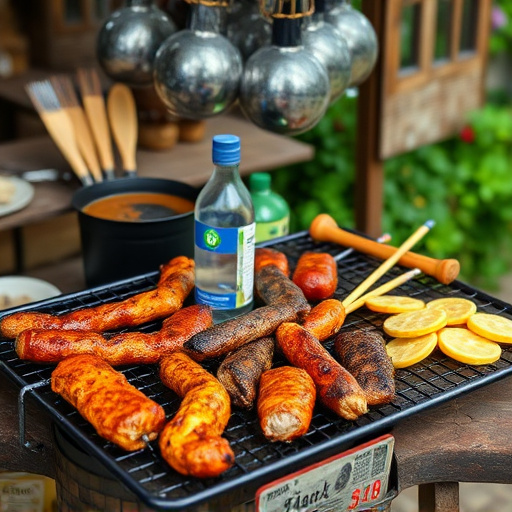Achieving perfectly tender BBQ ribs involves understanding collagen breakdown from slow cooking techniques. The right rib cut, either baby back or strips, impacts flavor and texture. Dry brining with spices enhances flavors and tenderness. Balancing sweet, tangy, and smoky notes in BBQ sauce complements slow-cooked ribs. Sides like coleslaw, mashed potatoes, mac and cheese, and steamed veggies complete a satisfying meal. Follow these steps for an authentic recipe for BBQ ribs.
- Understanding the Science Behind Tender Ribs: Collagen Breakdown and Slow Cooking
- Choosing the Right Cut for BBQ Ribs: Baby Back vs. Strips
- Dry Brining: A Step-by-Step Guide to Enhance Flavor and Tenderness
- Smoking at the Right Temperature: Optimizing for Maximum Tenderness
- The Art of BBQ Sauces: Balancing Sweet, Tangy, and Smoky Flavors
- Pairing Side Dishes for a Complete Meal Experience
- Tips for Perfectly Crispy Rib Crust and Moist Meat Interior
Understanding the Science Behind Tender Ribs: Collagen Breakdown and Slow Cooking
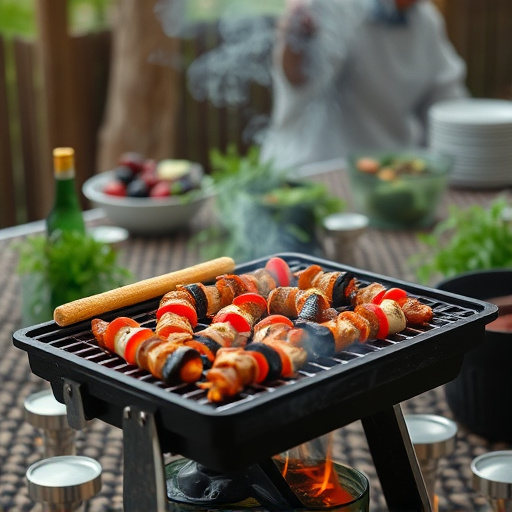
The secret to achieving perfectly tender BBQ ribs lies in understanding the science behind collagen breakdown and slow cooking techniques. Ribs are rich in collagen, a protein that provides structural support to the meat. When cooked rapidly at high temperatures, collagen primarily breaks down into gelatin, making the meat more tender but potentially leading to shrinkage and dry texture. However, slow cooking allows collagen to break down gradually, transforming it into gelatin and other flavor-rich compounds that enhance the ribs’ succulence. This process also helps to break down connective tissues, making the ribs incredibly tender and juicy when served.
In a recipe for BBQ ribs, employing low and slow cooking methods is key. The gentle heat allows the collagen to soften over time, resulting in a mouthwatering, melt-in-your-mouth experience. By contrast, rushed cooking can leave ribs tough and chewy. Thus, patience pays off when it comes to crafting the perfect plate of tender, delicious BBQ ribs that will satisfy any barbecue lover.
Choosing the Right Cut for BBQ Ribs: Baby Back vs. Strips
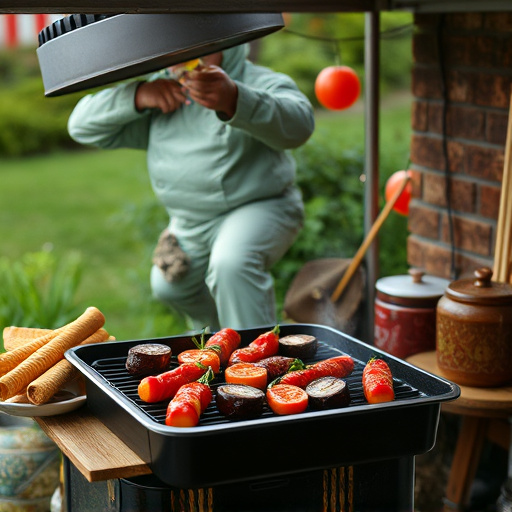
When it comes to BBQ ribs, understanding the different cuts is key to achieving that perfect, tender result in your recipe for bbq ribs. The two primary options are baby back and strips (or spare ribs). Baby back ribs are leaner, cut from the top of the ribcage, and have less fat between the bones, making them easier to cook through without burning the meat. This cut is ideal for those who prefer a lighter, more delicate flavor with a bit of crunch from the remaining fat.
In contrast, strips or spare ribs are meaty and robust, packed with flavor due to their higher fat content. They’re cut from the lower ribcage and have a distinct bone structure that gives them a unique texture when slow-cooked. For a richer, more intense recipe for bbq ribs experience, strips are the way to go. Their hearty nature pairs well with bold sauces and makes them stand out among various BBQ dishes.
Dry Brining: A Step-by-Step Guide to Enhance Flavor and Tenderness
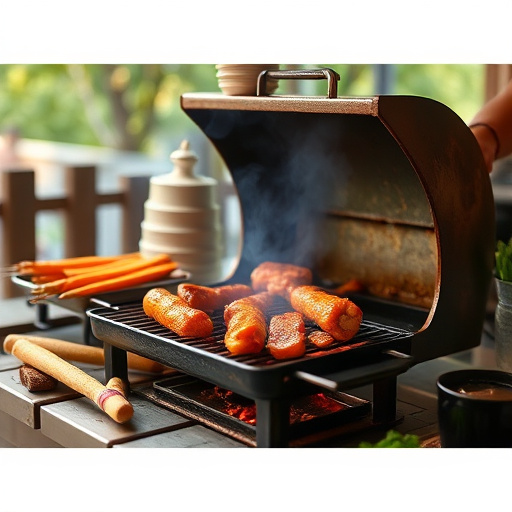
Dry brining is a technique that can significantly enhance the flavor and tenderness of your slow-cooked BBQ ribs. It’s a simple process that involves curing the ribs with salt before cooking, drawing out moisture and intensifying flavors. Here’s a step-by-step guide to get you started:
1. Prepare Your Ribs: Start with a good quality rack of ribs, either baby back or spare rib. Remove any membrane on the bone side using a knife or a paper towel and a bit of leverage. Pat the ribs dry with paper towels; this is important as you want them to absorb salt effectively.
2. Create a Brine Solution: Mix 1 tablespoon of kosher salt per pound of ribs with a little black pepper, garlic powder, and paprika for added depth. You can also experiment with other spices like brown sugar or chili powder if these align with your preferred recipe for BBQ ribs.
3. Massage the Brine: Rub the brine mixture all over the ribs, making sure to coat them evenly on both sides. Place them in a large ziplock bag or a container just big enough to hold them. Seal and massage gently to ensure the solution penetrates the meat.
4. Refrigerate: Dry brining typically requires 12 to 24 hours in the fridge, but for best results, aim for 24-48 hours. The salt will draw out juices from the meat, making it more tender and flavorful.
5. Cook: After dry brining, rinse the ribs off under cold water and pat them dry again. Proceed with your slow cooking method—be it in a smoker or oven—for incredibly tender and delicious BBQ ribs.
Smoking at the Right Temperature: Optimizing for Maximum Tenderness
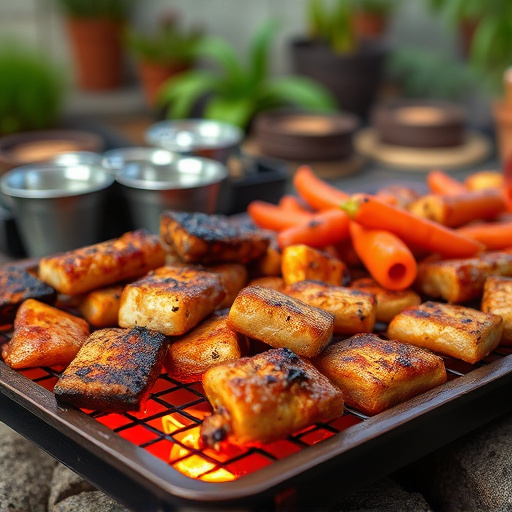
The Art of BBQ Sauces: Balancing Sweet, Tangy, and Smoky Flavors
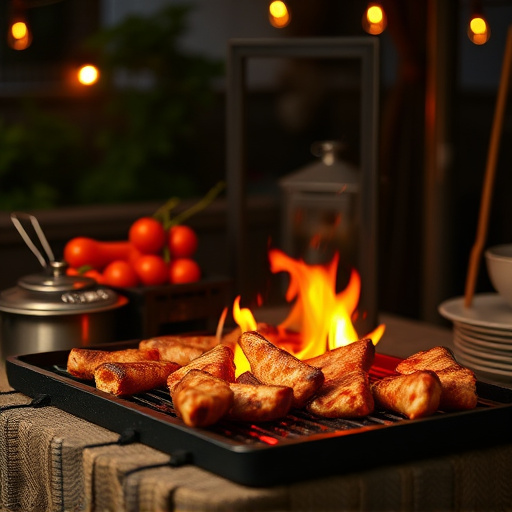
The perfect BBQ sauce is a delicate balance of flavors that enhances, but doesn’t overpower, the natural taste of smoky ribs. When crafting a sauce for your recipe for BBQ ribs, aim for a harmonious blend of sweet, tangy, and smoky notes. The sweetness comes from ingredients like brown sugar or honey, which not only adds a delightful flavor but also helps to tenderize the meat during cooking. Tangy elements, often provided by vinegar or citrus juices, cut through the richness and provide a refreshing contrast.
Smoky flavor is the cornerstone of a great BBQ sauce for ribs, replicating the traditional smoking process in a condiment. This can be achieved with liquid smoke or by cooking down tomatoes, chili peppers, or wood chip-infused ingredients to create a rich, aromatic base. The art lies in finding the right balance—too much sweetness may overpower, while too little smokiness won’t impart the desired flavor profile. Experimenting with different combinations will help you craft a sauce that complements your slow-cooked, tender ribs perfectly.
Pairing Side Dishes for a Complete Meal Experience
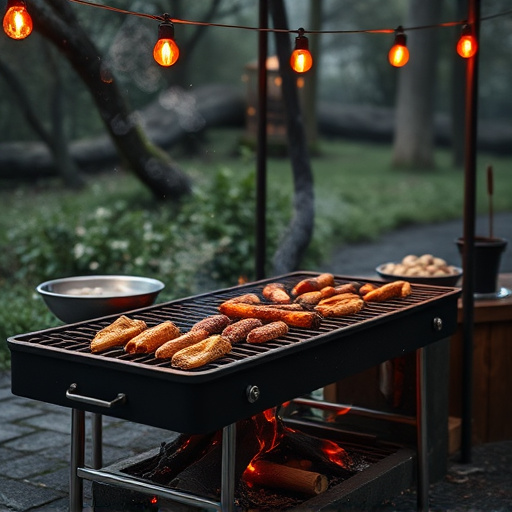
When serving your perfectly slow-cooked, smoky flavored ribs, consider the side dishes that will complement this mouthwatering main course. A classic pairing is a simple yet flavorful coleslaw, offering a crisp texture and tangy taste that cuts through the richness of the ribs. For an added depth of flavor, mashed potatoes or creamy mac and cheese are excellent choices, providing a comforting base for your BBQ rib feast.
Complete the meal experience with a side of fresh steamed vegetables like green beans or corn on the cob, ensuring a well-rounded and satisfying dinner. These sides not only enhance the overall taste profile but also cater to various dietary preferences, making it a delightful spread for all your guests to enjoy.
Tips for Perfectly Crispy Rib Crust and Moist Meat Interior
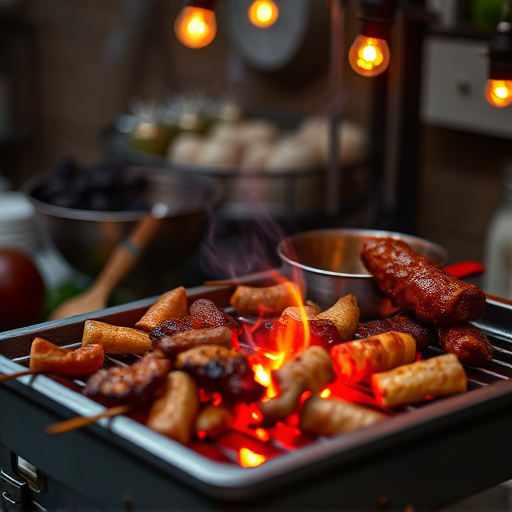
To achieve perfectly crispy rib crust and moist meat interior in your slow-cooked BBQ ribs recipe, pay attention to a few key techniques. First, start by dry-brining the ribs ahead of time. This involves rubbing salt all over the ribs, which helps draw out moisture and promotes a better crust when cooked. After brining, pat the ribs dry thoroughly before cooking; this step is crucial for achieving that desired crispy exterior.
During cooking, use indirect heat and maintain a consistent temperature. Slow cooking allows the meat to break down and become tender, while the low heat prevents burning or overcooking. Brush on a simple rub or barbecue sauce sparingly during the last hour of cooking for added flavor without compromising the ribs’ tenderness. Ensure you let the ribs rest after taking them off the grill; this resting period allows any juices to redistribute, ensuring both crispy crust and juicy meat.
